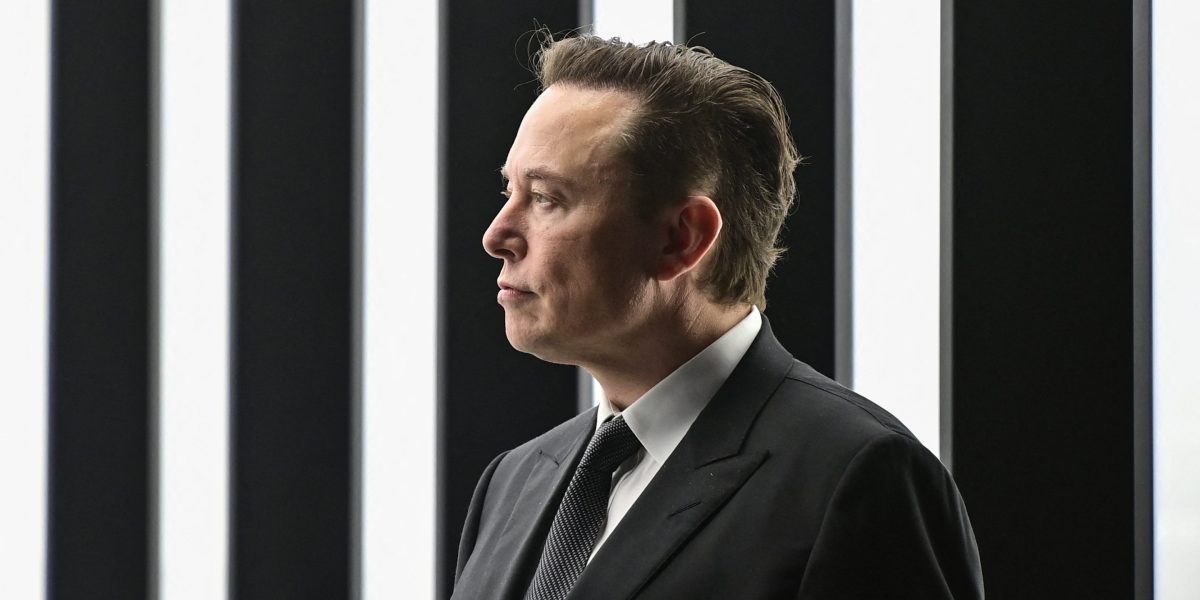
Elon Musk ensured he didn’t disappoint investors on Tuesday, even if his company’s quarterly earnings did.
Exuding confidence, Tesla’s CEO flipped the switch on what some are calling his “war-time mode” and delivered a clutch performance during the Q1 earnings call, promising to speed up the deployment of badly-needed new models that would reignite its supercharged growth rates of yesteryear.
“We’ve updated our future vehicle lineup to accelerate the launch of new models ahead of previously mentioned start of production in the second half of 2025,” he told investors. “So we expect it to be more like the early 2025, if not late this year.”
With his $45 billion pay package from 2018 on the line and the stock plumbing fresh 52-week lows on Monday, Musk needed to shore up waning confidence in Tesla’s busted equity story.
Reports he had abandoned the $25,000 low-cost car already deep in development in favor of a dedicated robotaxi model Musk is now calling the Cybercab, were deemed so risky the son of one of Musk’s most ardent investors, Ron Baron, branded it “thesis-changing”.
In a much needed call Musk stepped up as the adult in the room and laid the foundation for Tesla’s growth strategy; most importantly a lower cost vehicle slated for 2025 production/delivery. We believe the next wave of the growth story and autonomous vision key. PT to $275 🏆🐂
— Dan Ives (@DivesTech) April 24, 2024
On Tuesday, he needed to present a roadmap showing how Tesla would realistically bridge the next few quarters of drought until an entry model and robotaxi can finally arrive.
His answer was to unveil a seismic strategy shift that may prove fateful.
No longer would the $25,000 model he recently claimed was a “revolution in manufacturing” incorporate “a level of production technology that is far in advance of any automotive plant on earth”.
In a reversal of his comments in December, he said new models (plural) would instead be built on existing assembly lines and only “utilize aspects” of a new next-gen platform that took center stage at Investor Day last March.
This would save Tesla potentially billions of dollars in capital expenditures, while bringing one or more models to market sooner than the promised latter half of 2025, as well as making it not contingent on the ramp up of a new factory in Mexico or elsewhere.
Musk added: “We think this should allow us to reach over 3 million vehicles of capacity when realized to the full extent.”
The downside is that Tesla acknowledged that the planned reduction in manufacturing costs by 50% over the existing Model 3/Y platform may not materialize.
Meanwhile only the dedicated robotaxi model would continue to pursue the so-called ‘unboxed’ strategy Tesla believes is so revolutionary.
Longtime bulls Morgan Stanley subsequently predicted the Model 2, as the unnamed low-cost entry car is often called, would now morph into essentially stripped-down versions of the aging Model 3 and Model Y “with improvements in software and AI/hardware capability”.
Dan Ives of Wedbush Securities dubbed it the “Model 2.5”, a hybrid of new and old platforms.
Not one to readily accept defeat
Bears growled the hastily changed strategy was just another sleight of hand to distract from a dismal first quarter in which revenue and earnings missed expectations, and the company burned through reserves of $2.5 billion—Tesla’s first cash drain since the very start of the COVID pandemic.
Musk’s product timelines, after all, are largely meaningless. His preferred modus operandi is announcing wildly unrealistic goals that his team must then scramble to meet under enormous pressure and the looming risk of losing their jobs.
Whether it’s the long-delayed Semi and Roadster—both unveiled more than six years ago—his 2019 robotaxi plans or the promised performance of Tesla’s next generation 4680 cells from Battery Day in 2020, Musk’s track record for delivering on his self-imposed targets has been dismal of late.
Even his hotly anticipated halo product, the Cybertruck, has so far failed to inject any confidence.
Yet the polarizing entrepreneur isn’t one to readily acknowledge defeat.
This week, he recycled a video from Autonomy Day held almost exactly five years ago, in which he first laid out his vision for a Tesla driverless ride-hailing network that would compete with Uber and Lyft.
— Elon Musk (@elonmusk) April 22, 2024
His lawyers argue unmet promises do not constitute fraud when set against the scale of his ambitions, but merely represent failure.
Investors generally have looked the other way so long as no competitor out-innovates Tesla.
A torrent of bad news, including persistent and repeated price cuts amid disappointing sales, has tarnished his reputation lately, however. He seems less eager to manage Tesla and far more interested in stoking hot-button political issues—helpful for engagement farming on his ailing social media platform X but a turn-off for most EV customers.
That’s why Wedbush’s Ives said Musk needed to show up with his big boy pants on this time and act like an adult after his recent spate of poor performances that only unnerved investors.
And that he did: reaffirmed volumes would grow in 2024, promised demand in Q2 would be better, predicted he would ink his first driverless software licensing deal with at least one rival carmaker before the year was out and even suggested his Optimus robot might go on sale in late 2025.
Tesla also said the company had sufficient liquidity to fund its product roadmap and long-term capacity expansion plans while maintaining a strong balance sheet during this uncertain period, putting to bed any speculation that Tesla might need to raise issues of either fresh equity or debt.
With sentiment bearish going into the results, his quiet confidence dispelled the gloom for now.
Thanks to a mixture of short covering and ‘sell on the rumor, buy on the fact’, shares are expected to jump 13% when trading opens, adding $50 billion in value, or roughly the equivalent of a Ford or General Motors.

